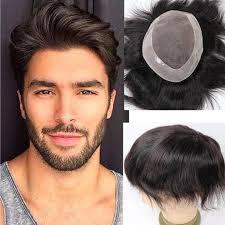Hair loss is one of the most common concerns for both men and women worldwide. Whether caused by genetics, hormonal changes, stress, or medical conditions, thinning hair can deeply affect self-esteem and confidence. Over the years, many treatments have emerged, from medications to surgical procedures. However, one of the most popular, cost-effective, and instant solutions is the Hair Patch. But what exactly is a hair patch, how does it work, and is it truly the right option for people struggling with baldness or thinning hair?

In this article, we will explore everything you need to know about hair patches, including their benefits, procedure, cost, maintenance, and how they compare with other hair restoration solutions.
A hair patch, often referred to as a non-surgical hair replacement system, is a custom-designed hair unit that covers bald patches or areas with thinning hair. Unlike wigs, which cover the entire scalp, hair patches are tailored to match the natural hair texture, color, and density of the wearer. They are fixed to the scalp using skin-friendly adhesives, tapes, or clips, giving a natural-looking hairline and overall appearance.
This non-invasive solution has gained massive popularity because it provides immediate results without surgery or long recovery periods. Many people use the term hair system, hair toupee, or non-surgical hair replacement interchangeably with hair patch.
The process begins with an evaluation of the scalp and baldness level. Specialists create a customized patch made of either synthetic or natural human hair. The base of the patch is usually made of lace, monofilament, or polyurethane material to ensure breathability and comfort.
Once prepared, the patch is attached using medical-grade adhesive or clips, blending seamlessly with the existing hair. Unlike traditional wigs, a hair patch does not look artificial because it is carefully matched to the individual’s natural style.
A hair patch is suitable for people of all ages dealing with partial baldness, receding hairlines, or thinning crowns. It is especially effective for individuals who are not good candidates for surgical hair transplant due to medical conditions, low donor hair availability, or budget constraints.
Many celebrities, professionals, and everyday people prefer hair patches because they are quick, painless, and affordable. Whether you are dealing with male pattern baldness, alopecia, or thinning caused by stress, a hair patch can restore confidence instantly.
The rising popularity of hair patches is due to several benefits:
Unlike hair transplants, which take months to show visible growth, a hair patch provides instant coverage. With the right customization, it looks almost identical to natural hair.
Since no surgery or medication is involved, there are no risks of scarring, infections, or side effects. This makes it a safe option for most people.
Compared to hair transplants or advanced medical treatments, hair patches are more budget-friendly while still delivering a natural appearance.
Hair patches allow users to style, dye, or cut their hair as they wish. With proper care, they can be worn during regular activities like exercising, swimming, or traveling.
One of the most common questions is whether a hair patch is better than a hair transplant. The answer depends on personal goals, budget, and expectations.
A hair transplant is a permanent solution where natural hair follicles are surgically implanted into bald areas. However, it is expensive, requires surgery, and may not be suitable for everyone. A hair patch, on the other hand, offers instant results, is non-invasive, and can be maintained or replaced over time.
For people seeking a permanent fix, hair transplant may be ideal. But for those wanting quick, cost-effective, and non-surgical coverage, a hair patch is the more practical option.
The lifespan of a hair patch depends on the material, quality, and how well it is maintained. On average, a good-quality patch can last anywhere from 6 months to over a year. Proper cleaning, adhesive reapplication, and regular salon visits can significantly extend its durability.
Maintaining a hair patch is relatively simple but requires consistency. Regular cleaning with mild shampoos, avoiding harsh chemicals, and proper storage are essential. Depending on the attachment method, users may need to visit the salon every 3–4 weeks for reattachment and styling.
For best results, it is recommended to consult professionals rather than attempting DIY fixes, as improper handling can reduce the patch’s lifespan and natural look.
The cost of a hair patch varies depending on the material, customization, and geographical location. In countries like India and Pakistan, prices are significantly more affordable compared to Western nations. On average, a customized hair patch can range from $150 to $600 globally. Some premium options with natural human hair may cost more.
Since hair patches are non-surgical, side effects are minimal. However, improper adhesives or poor-quality patches may sometimes cause scalp irritation or itching. This is why it is crucial to choose a reliable hair replacement clinic and invest in high-quality materials.
So, is a hair patch the right solution for hair loss? For many people, the answer is yes. A hair patch offers an immediate, natural-looking, and cost-effective solution without the risks of surgery. It is ideal for those seeking instant results, improved self-confidence, and flexibility in styling.
While it may not be a permanent cure like a hair transplant, the convenience, affordability, and realistic outcome of a hair patch make it one of the most popular choices in modern hair restoration.
If you are struggling with baldness or thinning hair and want to regain your youthful look without breaking the bank, a hair patch could be the best decision for you.